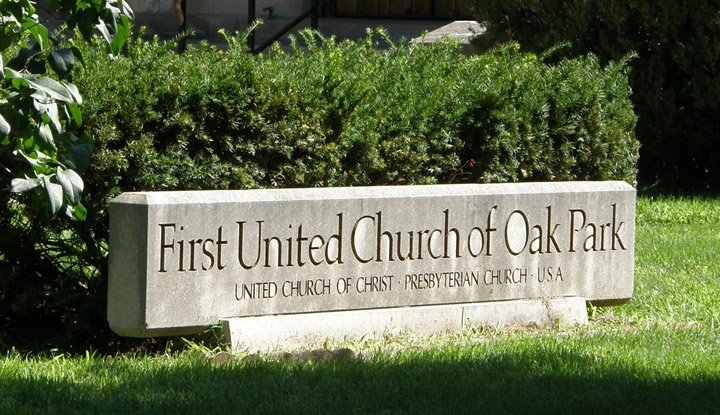

Unity Temple
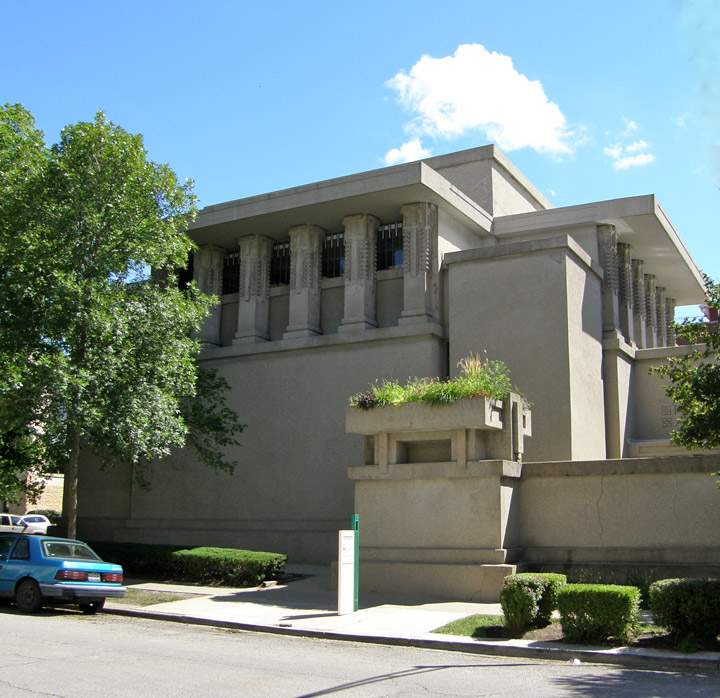
Unity Temple
Unity Temple is a Unitarian Universalist church in Oak Park, Illinois, and the home of the Unity Temple Unitarian Universalist Congregation. It was designed by the American architect Frank Lloyd Wright, and built between 1905 and 1908. Unity Temple is considered to be one of Wright's most important structures dating from the first decade of the twentieth century. It is located at 875 Lake Street, Oak Park Illinois.
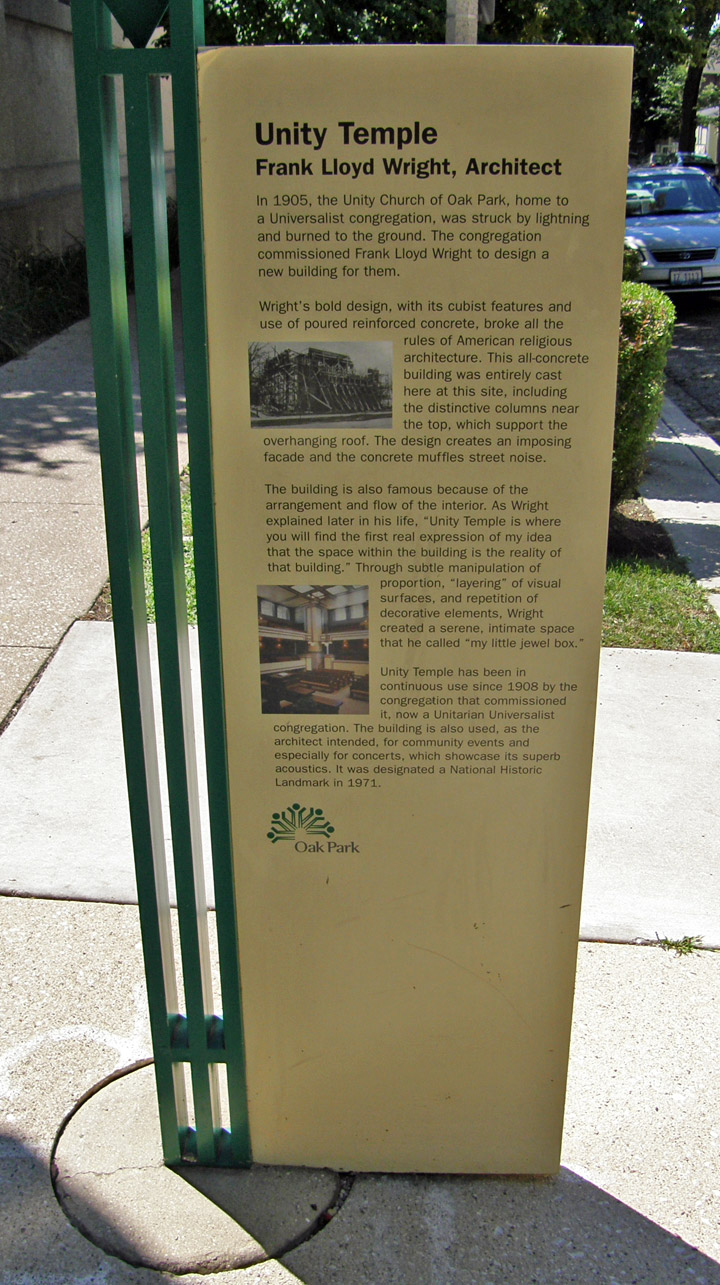
In 1905, after the original Unity Church burned down, the Universalist
congregation of Oak Park, Illinois turned to architect Frank Lloyd Wright to
design them a new structure. The result was Unity Temple. Wright was not only
living in Oak Park, but was a Unitarian - which faith then had many beliefs in
common with Universalism. The congregation needed a space of worship, as well as
a community room. There were several immediate problems that the architect had
to work with in order to satisfy the client. The budget for the Universalist
congregation was rather small for its needs: $40,000 US dollars; and the
proposed building site was long, but not very wide. Additionally, the building
site stood on a busy street. And finally, the architect was expected to design
not only the structure, but furniture and stained glass for the building.
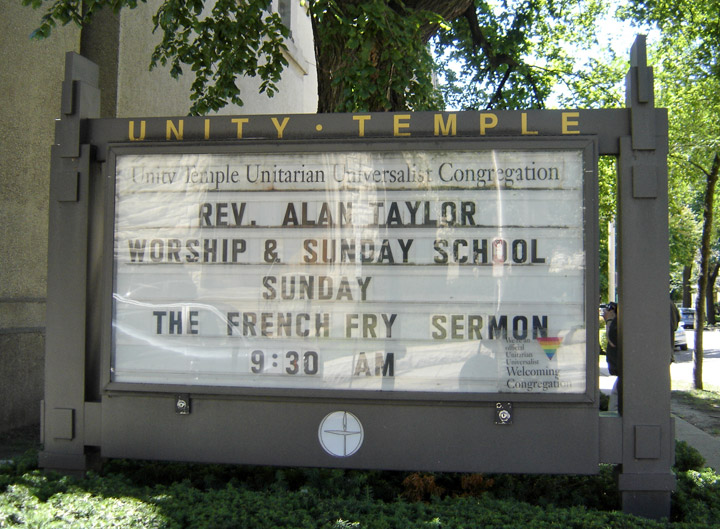
To accommodate the needs of the congregation, Wright divided the community space
from the temple space through a low, middle loggia that could be approached from
either side. This was an efficient use of space and kept down on noise between
the two main gathering areas: those coming for religious services would be
separated via the loggia from those coming for community events. This design was
one of Wright's first uses of a bipartite design: with two portions of the
building similar in composition and separated by a lower passageway, and one
section being larger than the other. The Guggenheim Museum in New York City is
another bipartite design.
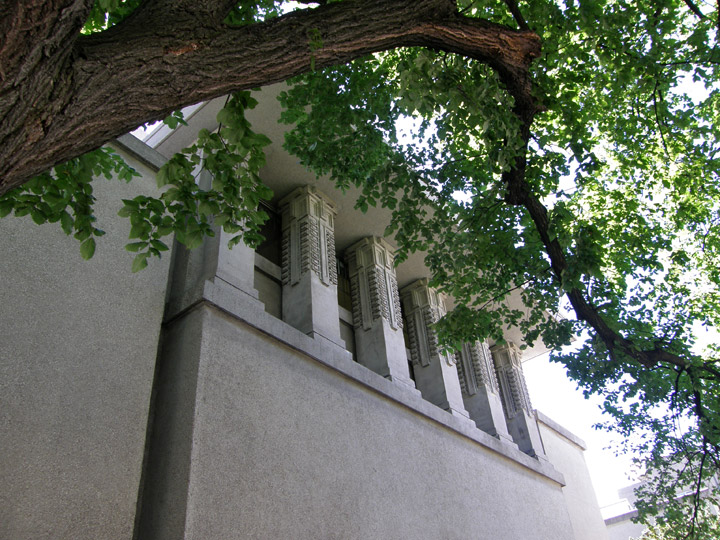
To reduce construction costs, Wright chose steel-reinforced concrete as the main
building material for Unity Temple. In fact, Unity Temple is thought to be the
first building in the world built from reinforced concrete poured on the site;
that is, wooden forms were built on site, and concrete was poured into them in
order to create the walls. However, this is not a fact. A site-cast,
steel-reinforced skyscraper was built in Cincinnati as early as 1903, and a
site-cast concrete house was built in New York State even earlier than that.
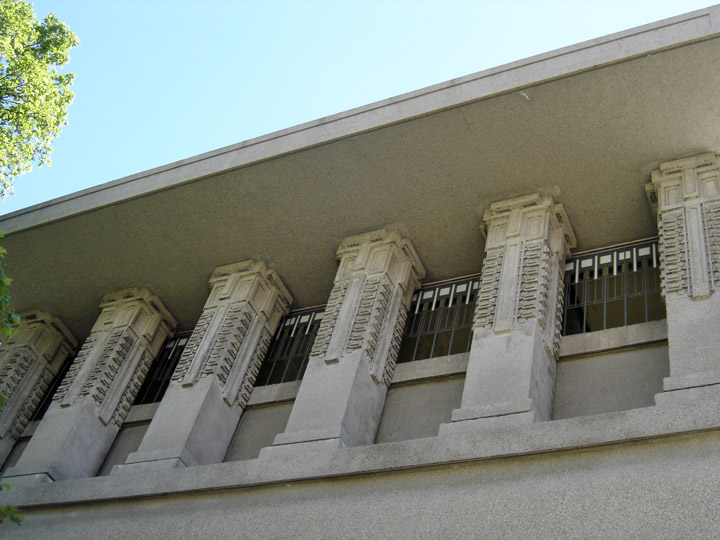
To reduce noise from the street, Wright eliminated street level windows in the
temple. Instead, natural light comes from stained glass windows in the roof, or
clerestories along the upper walls. Because the members of the parish would not
be able to look outside, Unity Temple's stained glass was designed with green,
yellow, and brown tones in order to evoke the colors of nature. The main floor
of the temple is accessed via a lower floor (which has seating space), and the
room also has two balconies for the seating of the congregation. These varying
seating levels allowed the architect to design a building to fit the size of the
congregation, but efficiently: no one person in the congregation is more than 40
feet from the pulpit. Wright also designed the building with very good
acoustics.
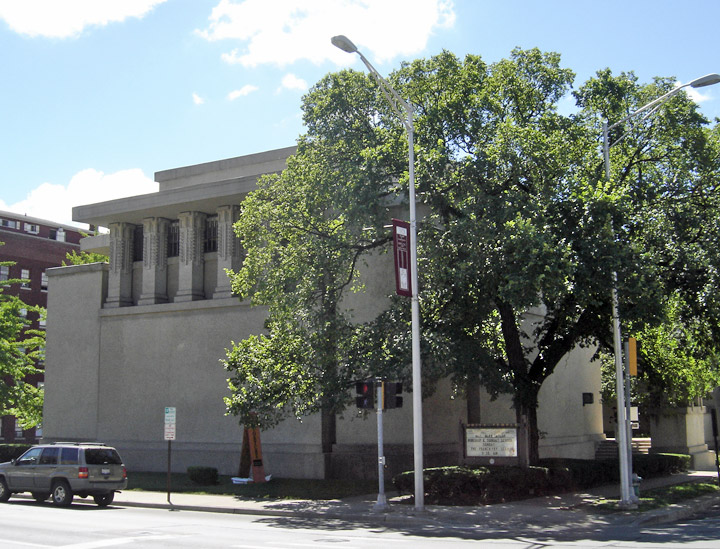
The design of Unity Temple represents a leap forward in design for Wright. In recounting his experiences with Unity Temple, he stated that this design was the first time he ever realized that the real heart of a building is its space, not its walls. Indeed, architectural historians have commented on Wright's genius in creating and manipulating space in his designs; in his book The Master Builders, Peter Blake entitled the section on Wright "The Mastery of Space."
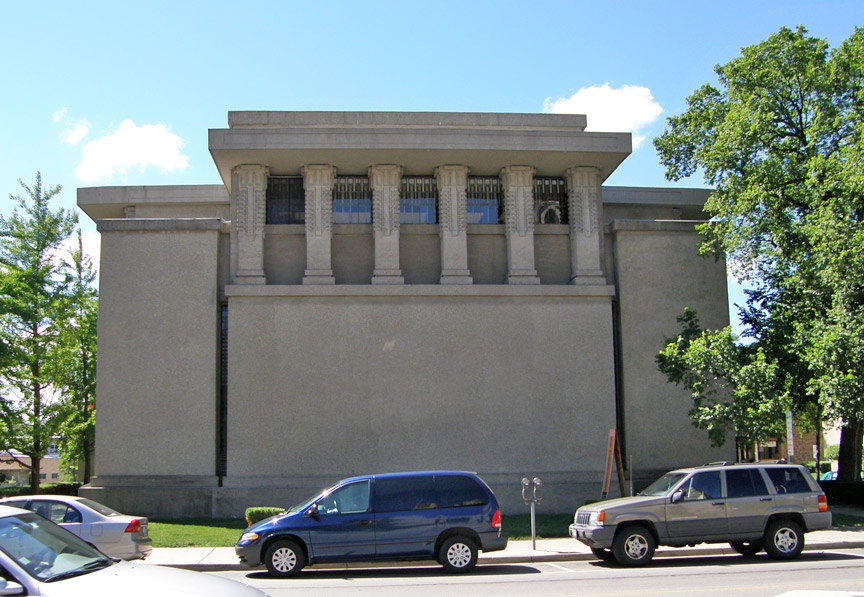
The building was completed in 1908 and officially dedicated on September 26,
1909. The original Universalist (now Unitarian Universalist) congregation still
owns and uses Unity Temple, although a separate and secular organization, the
Unity Temple Restoration Foundation, is in charge of the building's
multi-million dollar restoration effort.
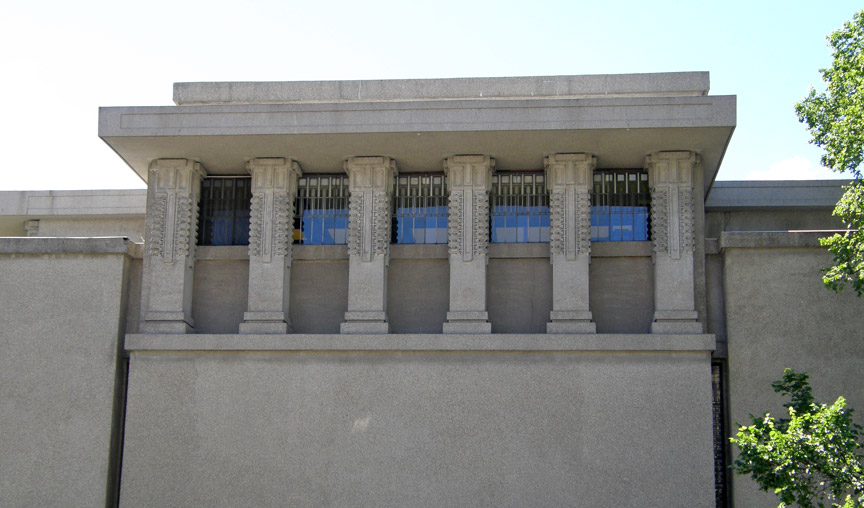
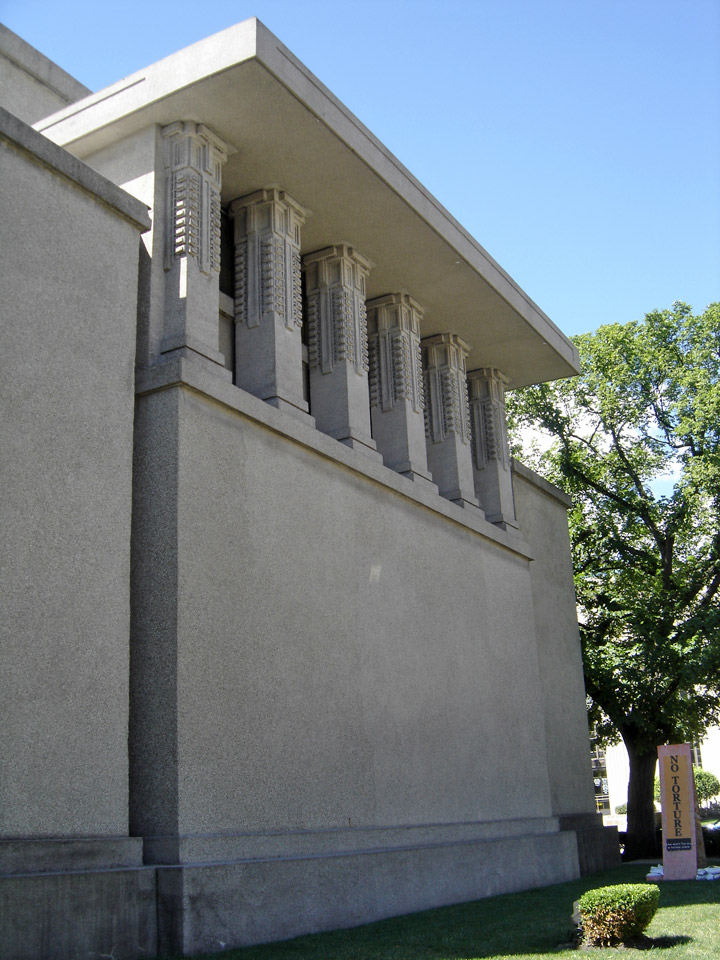
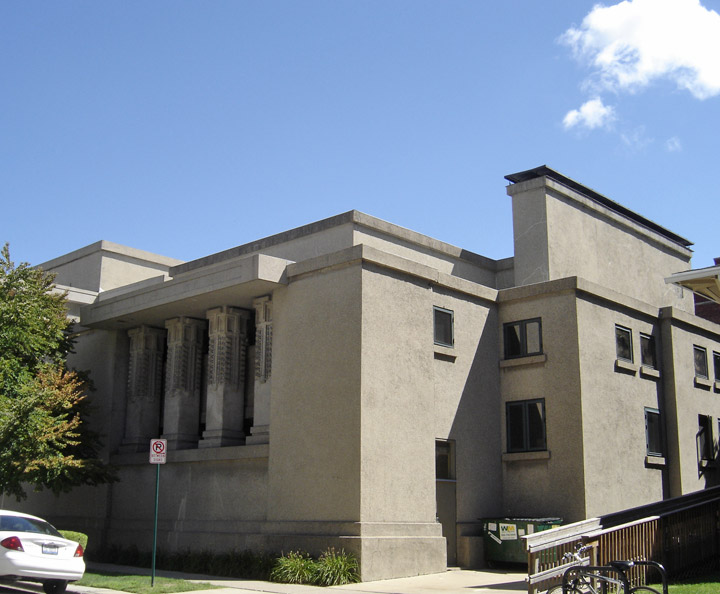
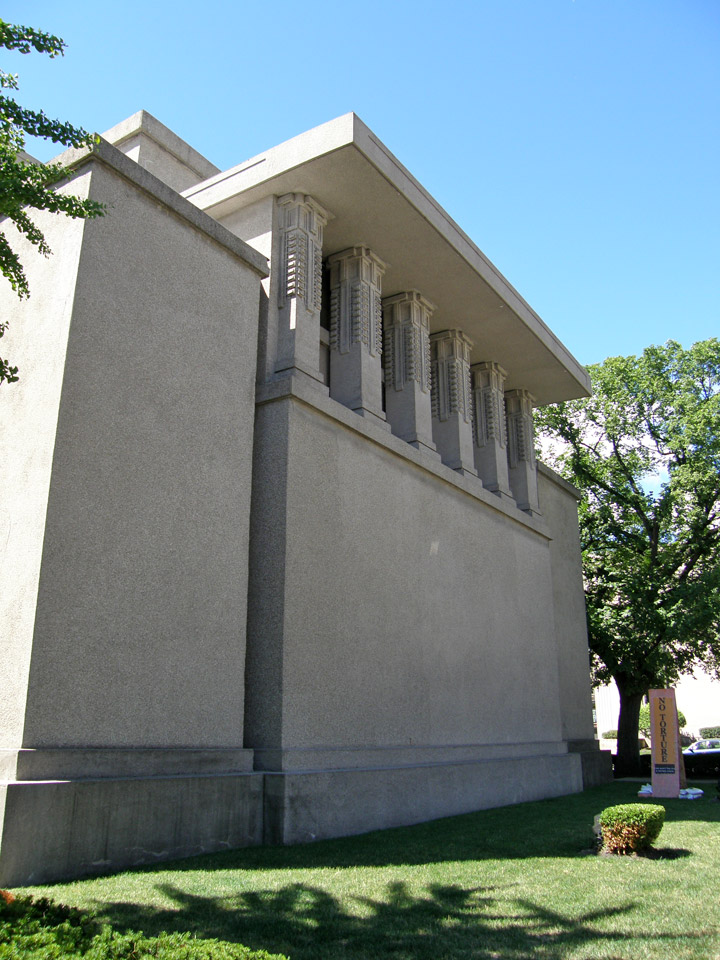

the more conventional church architecture across the streetet

